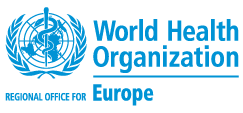Description of regional surveillance and national surveillance systems contributing to Flu News Europe
The joint European Centre for Disease Prevention and Control (ECDC)–WHO Regional Office for Europe Flu News Europe bulletin describes and comments on influenza activity in the 54 countries and areas with routine influenza surveillance systems in the WHO European Region. The bulletin provides integrated information on the objectives for influenza surveillance at Regional and global level, which are timing, spread, prevalence and characteristics of circulating viruses, impact and severity of seasonal influenza activity. This information is targeted to public health specialists and clinicians to inform decision making, including influenza vaccine strain selection.
Flu News Europe is published on a weekly basis during the influenza season (week 40 to week 20 of the following year) and monthly thereafter to week 39. Quantitative and qualitative epidemiological and virological data are reported to The European Surveillance System (TESSy) hosted by ECDC, after which the data are analysed and presented in the bulletin. Most countries and areas provide influenza surveillance data to TESSy from more than one surveillance system; all national surveillance systems are summarised in the table below and full details can be found in the country/area profiles available in English and Russian (see links below).
Surveillance of mild disease due to influenza in the majority of countries and areas is based on nationally organized sentinel networks of primary care physicians, mostly general practitioners (GPs), covering at least 1–5% of the population in their country or area. In sentinel surveillance case definitions for influenza-like illness (ILI) and acute respiratory infections (ARI) are applied. Depending on the country or area, physicians may report the weekly number of patients seen with ILI and/or ARI, including age-groups, to the National Focal Point for influenza. Some countries or areas collect data on ILI or ARI from all healthcare facilities in the country and area (universal surveillance).
A subset of specimens from sentinel ILI and ARI patients is tested for influenza. It is tested for both influenza type A and type B viruses, as well as influenza type A virus subtypes A(H1N1)pdm09 and A(H3N2). Some countries or areas also determine the lineage of influenzas type B viruses (B/Victoria-lineage or B/Yamagata-lineage). Additionally, most report on the following semi-quantitative indicators of influenza activity at the national level: intensity, geographic spread, trend, impact and dominant virus (see indicator definitions below).
For severe disease associated with influenza, countries and areas, mainly in the eastern part of the Region, conduct sentinel surveillance for hospitalized cases presenting with Severe Acute Respiratory Infection (SARI), according to standard case definitions. Depending on the country and area, all or a subset of SARI patients are tested for influenza virus infection. For the majority of influenza viruses, the influenza type and subtype are determined. Countries and areas, mainly in the western part of the Region, report on laboratory-confirmed influenza-positive cases from intensive care units (ICU) and/or other wards.
Case definitions, populations under surveillance, and data formats differ among countries or areas. Additionally, some do not provide data on influenza type A virus subtypes. The description of severity of the influenza season is augmented with data from the EuroMOMO project, which monitors all-cause excess mortality among a network of countries or regions.
National influenza centres (NICs) are institutions designated by Ministries of Health and recognized by WHO to participate in the work of the WHO Global Influenza Surveillance and Response System (GISRS). NICs, and other nationally recognised influenza laboratories, receive respiratory specimens from a range of sources. These include both sentinel sources and non-sentinel sources (such as hospitals, schools, primary care facilities not involved in sentinel surveillance, or nursing homes and similar settings where influenza outbreaks might occur). The laboratories collate and generate data on characteristics of circulating influenza viruses according to influenza virus type, subtype (A(H3N2) and A(H1N1)pdm09) or lineage (B/Victoria-lineage or B/Yamagata-lineage). However, in contrast to influenza-positive specimens from sentinel sources, large proportions of both influenza types from non-sentinel sources are neither subtyped nor ascribed to a lineage.
NICs in the WHO European Region also conduct genetic characterization of influenza viruses to determine the extent of their similarity to the viruses included in seasonal influenza vaccines. With increased ease and availability of gene sequencing, greater numbers of influenza-positive clinical specimens and some influenza isolates from both sentinel and non-sentinel sources, are genetically characterized. The prevalence of mutations associated with reduced susceptibility to antiviral drugs is also determined by phenotypic and genotypic assays.
In addition, many laboratories conduct preliminary antigenic analyses of influenza viruses that were isolated in their laboratories. This is done using a limited range of post-infection ferret antisera raised against influenza reference viruses and vaccine viruses (ferret antibody responses are similar to those of humans). These analyses are performed using haemagglutination inhibition (HI) assays and assist laboratories in deciding which viruses to share with a WHO Collaborating Centre (WHO CC) for Reference and Research on Influenza.
However, due to the nature of HI, there is considerable variation between laboratories. As well, in recent years, interpretation of HI data has become challenging with the range of seasonal influenza viruses currently circulating. For these reasons, antigenic data reported to TESSy is currently not included in Flu News Europe.
Detailed antigenic characterization with wider panels of antisera by HI and virus neutralisation (VN) assays is carried out by the WHO CC and reported in ECDC’s monthly characterisation reports. Countries and areas can provide further insight into their national situation through the use of free text fields submitted to TESSy, which are particularly helpful for defining the start of the season (using national criteria), for describing outbreaks in closed settings, and for providing context and caveats to submitted data.
Definitions of qualitative indicators
Intensity is a measure of influenza activity within individual countries and areas.
Baseline or below epidemic threshold: ILI or ARI rates that are very low and at levels usually seen throughout the inter-epidemic period.
Low: ILI or ARI rates that are relatively low compared to rates from historical data but higher than the baseline. Influenza virus detections have been reported.
Medium: ILI or ARI rates that are similar to rates usually observed, based on historical data. Influenza virus detections have been reported.
High: ILI or ARI rates that are higher than rates usually observed, based on historical data. Influenza virus detections have been reported.
Very high: ILI/ARI rates that are much higher than rates usually observed, based on historical data. Influenza virus detections have been reported.
Intensity level can be defined using two approaches:
Qualitative indicator based on a national expert evaluation of intensity. For countries and areas that report intensity as a qualitative indicator using an expert evaluation of intensity, they can do so by reviewing the weekly ILI or ARI rates and comparing them to rates in previous seasons. It is recommended to take influenza virus detections into account as well.
Semi-quantitative indicator using historical data (e.g. Moving Epidemic Method, WHO or other methods). For countries and areas that report intensity as a semi-quantitative indicator, they can do so by a predefined method. It is recommended to take influenza virus detections into account as well as syndromic data.
Geographic spread is a measure of the geographic distribution of reported detections of influenza viruses in specimens from sentinel or non-sentinel sources.
No activity: No influenza viruses detected (other than detections from cases with recent known history of travel).
Sporadic: Influenza viruses sporadically detected.
Local(ised): Circulation of influenza viruses limited to one administrative unit in the MS (or reporting site);
Regional: Circulation of influenza viruses appearing in multiple but less than 50% of the administrative units of the MS (or reporting sites)*.
Widespread: Circulation of influenza viruses appearing in 50% or more of the administrative units of the MS (or reporting sites).
*Regional activity is generally not used for MS with a small population (<5 M) and covering a small geographic area.
Trend is a measure of changes in ILI and/or ARI rates and lab-confirmed influenza cases in comparison to the previous week or weeks.
Increasing: ILI and/or ARI consultation rates are substantially higher compared to the previous week(s) and influenza viruses must have been detected in specimens from sentinel and/or non-sentinel sourcesa,b.
Stable: ILI and/or ARI consultation rates are similar compared to the previous week(s). Influenza viruses must have been detected in specimens from sentinel and/or non-sentinel sourcesb.
Decreasing: ILI and/or ARI consultation rates are substantially lower compared to the previous week(s). Influenza viruses must have been detected in specimens from sentinel and/or non-sentinel sources.a,b
aMultiple prior weeks should be used to assign increasing or decreasing trend when intensity is at “baseline or below epidemic threshold,” and in the absence of such evidence default to stable;
bSentinel data are preferred but if they are not available non-sentinel data may be used.
Dominant virus reports on the dominant influenza virus type and/or subtype/lineage in the country and area.
The dominant influenza virus type, subtype or lineage is reported when 10 or more influenza-positive results per week (or weeks) are available, with the type (A or B) defined as a minimum return. The threshold for dominance is set at 60% and the threshold for co-dominance is set between 40% and 60%. The report of subtypes or lineage also requires a minimum of 10 positive viruses sub-typed or ascribed to a lineage.
We advise Member States to base their dominant type on sentinel data, where possible. These are generally from sentinel primary care facilities and best represent the circulation of influenza in the community. Where a country and area does not have data from sentinel sources, data from non-sentinel sources can be used to determine the dominant influenza type.
Impact is a measure of resultant hospitalization of the epidemic within individual countries and areas.
Baseline: influenza related hospitalizations (SARI or laboratory confirmed hospitalizations, as counts, percentage positivity or rates) at levels usually seen throughout the inter-epidemic period.
Low: influenza related hospitalizations (SARI or laboratory confirmed hospitalizations, as counts, percentage positivity or rates) that are relatively low compared to rates from historical data but higher than the baseline.
Medium: influenza related hospitalizations (SARI or laboratory confirmed hospitalizations, as counts, percentage positivity or rates) that are similar to rates usually observed, based on historical data.
High: influenza related hospitalizations (SARI or laboratory confirmed hospitalizations, as counts, percentage positivity or rates) that are higher than rates usually observed, based on historical data.
Very high: influenza related hospitalizations (SARI or laboratory-confirmed hospitalizations, as counts, percentage positivity or rates) that are much higher than rates usually observed, based on historical data.






